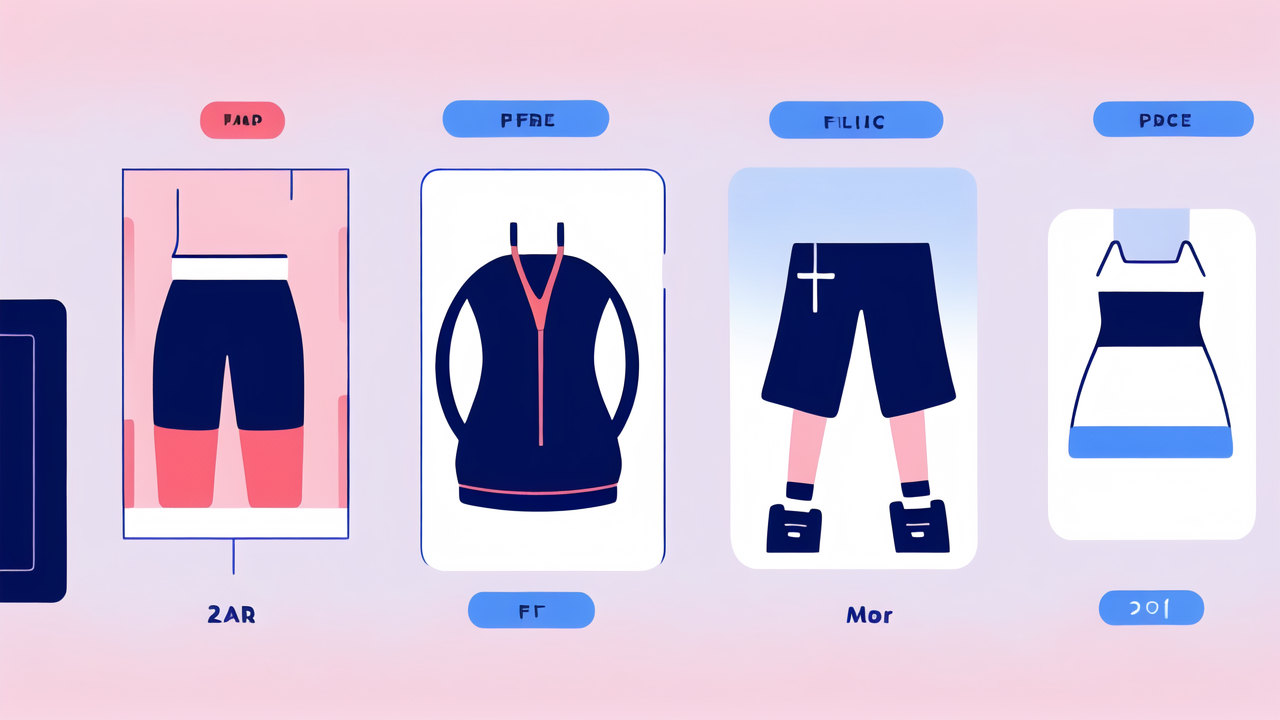Understanding Smart Clothing: Definitions and Drivers
What is Smart Clothing?
Smart clothing is a cutting-edge fusion of fashion and technology. It refers to garments with embedded sensors or electronics. These clothes can monitor, react, and adapt to the wearer's needs.

Smart clothing goes beyond basic wearables like smartwatches. It integrates tech directly into fabric and design. This allows for seamless functionality without bulky add-ons.
Examples include shirts that track heart rate or jackets that adjust temperature. Some smart clothes can even change color or pattern on demand. The goal is to enhance comfort, health, and style through innovation.
As the field grows, we're seeing more practical and stylish smart clothing options. From fitness gear to everyday wear, smart clothes are becoming more common.
The Technology Behind Smart Apparel
Smart apparel relies on a mix of advanced technologies. At its core are miniaturized sensors and microprocessors. These components are woven or printed directly into fabrics.
Conductive threads play a crucial role. They transmit data and power throughout the garment. This allows for seamless integration of tech features.
Some key technologies in smart clothing include:
- Biosensors for health monitoring
- Thermoelectric cooling for temperature control
- Piezoelectric fibers for energy harvesting
- E-textiles for touch and gesture control
Data processing is often done on-device or via smartphone apps. This allows for real-time feedback and analysis.
Battery life remains a challenge. However, innovations in energy harvesting and low-power tech are improving this.
The Market Forces Shaping Smart Clothing Growth
Several factors are driving the growth of smart clothing:
- Rising health awareness: Consumers want to track fitness and wellness data.
- Tech integration: People seek seamless ways to incorporate tech into daily life.
- Fashion innovation: Designers are exploring new ways to blend style and function.
- Sports performance: Athletes use smart gear to optimize training and recovery.
- Workplace safety: Industries adopt smart clothes for employee protection.
The COVID-19 pandemic has also boosted interest in health-monitoring wearables. This trend is likely to continue, supporting smart clothing growth.
Collaborations between tech firms and fashion brands are increasing. This is leading to more stylish and consumer-friendly smart apparel options.
As prices decrease and functionality improves, smart clothing is becoming more accessible.
The Impact of Smart Clothing on the Fashion Industry
Revolutionizing Fabric Selection and Fit
Smart clothing is changing how designers choose fabrics and create fits. Traditional textiles are being enhanced with tech-enabled properties.

New smart fabrics can:
- Regulate temperature
- Repel moisture
- Change color or pattern
- Self-clean or resist odors
These innovations allow for more versatile and functional clothing designs.
Fit is also being revolutionized by smart tech. 3D body scanning and AI algorithms create custom-fit garments. This reduces waste and improves customer satisfaction.
Some brands now offer "smart sizing" systems. These use data to recommend the best size for each customer.
As smart fabrics become more common, we'll see new design possibilities emerge. This could lead to entirely new categories of clothing.
Enhancing Consumer Experience with Connected Apparel
Connected apparel is transforming how people interact with their clothes. Smart garments can offer personalized experiences and useful features.
Some ways smart clothing enhances consumer experience:
- Gesture controls for music or phone calls
- Haptic feedback for notifications or navigation
- Adaptive heating or cooling based on body temperature
- Automatic style adjustments for different settings
These features make clothing more interactive and responsive to user needs.
Smart clothes can also integrate with other devices and apps. This creates a seamless tech ecosystem for users.
Brands are using connected apparel to gather data on wear patterns and preferences. This helps improve product design and marketing strategies.
As consumers become more tech-savvy, the demand for smart clothing features is likely to grow.
Sustainability and Eco-Friendly Practices in Smart Fashion
Sustainability is a key focus in smart fashion development. Many smart clothing innovations aim to reduce environmental impact.
Eco-friendly practices in smart fashion include:
- Using recycled or biodegradable materials for electronics
- Developing energy-efficient sensors and processors
- Creating durable designs that reduce the need for frequent replacements
- Implementing closed-loop recycling systems for smart garments
Some smart clothes help wearers reduce their carbon footprint. For example, by optimizing temperature control to save energy.
Brands are also exploring ways to make smart clothing production more sustainable. This includes using renewable energy and reducing water usage.
The longevity of smart garments is a challenge. Balancing tech updates with clothing durability is an ongoing issue.
As consumers demand more eco-friendly options, smart fashion will need to prioritize sustainability.
Future Trends and Predictions for Smart Clothing
Innovations on the Horizon for Smart Apparel
The future of smart apparel is full of exciting possibilities. Emerging technologies will create new functions and experiences.

Some innovations to watch for:
- Nanotechnology for self-cleaning and self-repairing fabrics
- Advanced biometrics for detailed health monitoring
- Augmented reality displays integrated into clothing
- Energy-harvesting fabrics that power devices
- Shape-shifting materials for adaptable designs
We may see smart clothes that can change their properties on demand. This could include adjusting thickness, color, or even style.
Medical applications of smart clothing are set to expand. Garments could monitor chronic conditions or deliver medication.
As AI improves, smart clothes may become more predictive. They could anticipate user needs before they arise.
The line between technology and clothing will continue to blur. This will lead to more seamless and intuitive smart apparel.
Consumer Adoption and Market Growth Projections
The smart clothing market is poised for significant growth. Analysts predict a compound annual growth rate of over 25% in coming years.
Factors driving adoption include:
- Decreasing costs of smart textiles
- Improved functionality and user experience
- Growing consumer interest in health and fitness tracking
- Increased availability of stylish smart clothing options
Initially, adoption may be highest in sports and fitness markets. However, everyday smart clothing is expected to gain traction.
As more big brands enter the market, consumer awareness and trust will increase. This will likely accelerate adoption rates.
Challenges to widespread adoption include privacy concerns and washing/care issues. Addressing these will be key to market growth.
By 2030, smart clothing could become a mainstream category in the fashion industry.
The Role of AI and Machine Learning in Shaping Smart Clothing
AI and machine learning are set to play a crucial role in smart clothing development. These technologies will enhance functionality and personalization.
AI applications in smart clothing include:
- Predictive analytics for health and fitness insights
- Adaptive comfort systems that learn user preferences
- Style recommendations based on wear patterns and contexts
- Automated maintenance alerts and care instructions
Machine learning algorithms will improve the accuracy of biometric data collection. This will make smart clothing more reliable for health monitoring.
AI could enable smart clothes to act as personal assistants. They might offer contextual advice or automate daily tasks.
As AI becomes more sophisticated, smart clothing will become more intuitive and responsive. This will create a more seamless user experience.
The integration of AI will likely lead to new categories of smart apparel we haven't yet imagined.




Leave a comment
This site is protected by hCaptcha and the hCaptcha Privacy Policy and Terms of Service apply.